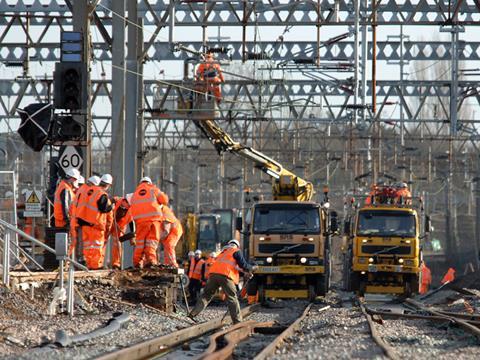
UK: The Office of Rail & Road’s annual report showing railway funding and spending between April 1 2017 and March 31 2018 was published on January 30.
In 2017-18 the cost of running the railways rose 1·4% year-on-year to £20·6bn. Income was down 1·3% to £19·4bn, largely because passenger numbers fell 1·4% and income from fares was down 2·4% to £9·8bn.
ORR said the reduction in passenger journeys was ‘largely’ because of an 8% decrease in journeys during engineering works at London Waterloo and strike action.
Train operators received £0·9bn of income from on-board catering, car parking and other sources; an increase of 2·3%.
The fall in fares income contributed to lower returns to the UK and devolved governments from train operators, resulting in an 8% increase in government funding.
Governments received net payments of £0·4bn from train operators, a reduction of £0·3bn. This reflected a combination of planned changes within franchise agreements, planned cost increases on some franchises, payments to some operators for delays to infrastructure upgrades, and lower than expected revenue growth.
Network Rail received £4·2bn of funding from governments. Its costs increased by 9·3% to £8·6bn, largely due to increased financing costs. It also paid £0·4bn in performance-based schedule 4 and 8 payments to train operators, a 4·6% increase.
Franchised operators’ overall costs fell 1·6% to £12·9bn, largely because they paid 12·1% less to governments. However, operators saw their costs increase for staff (0·9%), rolling stock (5·5%) and other operating costs such as access charges (1·4%).
Train operators’ declared dividends totalled £0·2bn, a decrease of 27% from 2016-17 but an increase of 6·5% compared to five years ago. Over the last five years, dividends have remained equivalent to around 2·5% of passenger fares, ORR said.



